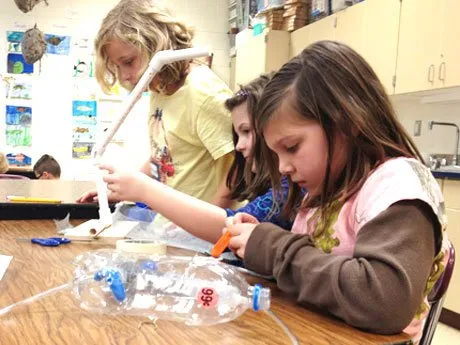Habitats, Bugs, Reptiles
10/24-10/28
Workshop Activities
1. Craft – Butterfly Life Cycle
2. Key Points – Animal Habitats
3. Collaborative – Insect or Not?
4. Writing – Habitat Notes
5. Math/Logic – How Many Legs?
6. Character Connection – Bee Good
7. Big Activity - Microhabitats
8. Movement – Habitat Toss
Quests to do at home:
Go on a nature photos scavenger hunt. Take pictures of plants, animals, insect, evidence of an animal visitor, etc.
Catch and study an insect. What is it? Where does it live? What does it eat? What eats it? Write your observations and discoveries in your wizard notebook.
Make habitat collages: http://www.ucmp.berkeley.edu/education/lessons/its_all_relative.html
Get a large frame or hula hoop. Take it outside and set it on the ground. Write down everything you can observe within the frame or hoop. What plants are there? Anything from the animal kingdom? What is in the dirt? What man-made items do you see? Write down descriptions of each thing you see in the frame or hoop. You may need to look up more information about some of these things.
Read books and watch movies about insects and where they live.
Play some math games: http://lessonplanspage.com/MathActivityFile.htm/
Discover the elements of biology in Harry Potter https://prezi.com/dinayhc2ocqv/elements-of-biology-and-physics-in-harry-potter/
Using a set of toy animals, sort them according to their habitats. You may want to make a quadrama, with a different biome in each section. http://imbloghoppin.blogspot.com/2011/09/response-to-reading-quadramas.html
Identify the ways wizards can get information from nature:
http://listdose.com/top-10-things-we-can-learn-from-nature/
http://www.purposefairy.com/68155/26-powerful-lessons-to-learn-from-nature/
Compare the strength of a bug to our own – do the math to figure out how much we could carry (an ant) and how high we could jump (flea).
Estimate then measure the length of a (fake) snake in inches and centimeters.
Hold snail races. Use a stopwatch to time the snails.
Make a worm ecosystem: http://weirdsciencekids.com/MakeWormEcosystem.html
Make a diorama that shows a scene from one of the chapters in a Harry Potter book.
Make a biome in a baggie: http://pbskids.org/zoom/activities/sci/biomeinabaggie.html
Learn about how a flea can jump. How high can you jump? Can you jump your own height?
Play insect and reptile charades game with family or friends. One person chooses a creature to act out and everyone guesses the animal.
Go into nature to observe several habitats such a field, pond, forest, etc. Create a habitats book. Each page will represent a different habitat, recording the plants and animals you observe in each habitat.
Do some insect experiments: http://lifestyle.howstuffworks.com/crafts/animal-crafts/insect-experiments.htm
Spend fifteen minutes outside. Write down each living thing you see and how many of them you see. Make a chart to illustrate your findings.
Make a collection of songs about insects.
Pretend you could speak Parseltongue. Write down the conversation you would have with a snake.
Do some nature math activities: http://www.actuarialfoundation.org/pdf/math-academy-see-it.pdf
Graph the number of each type of jelly beans in a package of Bertie Bott's Every Flavour Beans.





















